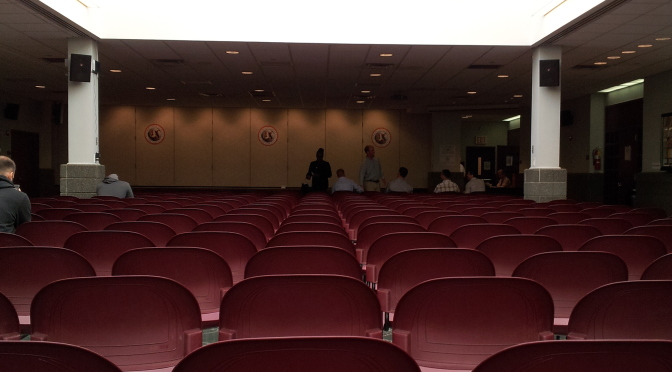My intention for this post is to share my experience, and for it to serve as a reference point/resource for women interested in entering the trades. This is continued series, so I hope you find some portion of this helpful! See all parts at this link: CLICK HERE – h!
After waiting for months, I finally received a letter from the local, inviting me to interview. I was pretty excited!
When I decided on plumbing, and started telling my friends, the first thing many of them said was, “OMG, do you really want to work with poop?!?” The answer is always: That is a very limited view of what plumbers actually do.
In the union, the projects are mostly commercial. In New York City, plumbers are some of the first builders on site, since the work is largely focused in the foundation of the building and every floor. So, sure, there might be some occasional poop encounters, but it’s not the primary scope of the work.
Part of my interest in plumbing is the larger, public health aspect of the work; how it can prevent diseases and affect our consumption of water. Also, I just like water, in the sense that it’s a feeling I’ve developed as a long-time swimmer.
Anyway, the day came when I had to make the trek to Queens. Coming from the “white collar” world, I was confused as to what attire was interview appropriate. I opted for a button down, long sleeve shirt, slacks, and some flats. Judging from those seated next to me while we were waiting for our interviews, the mens’ outfits ranged from 3-piece suits, casual Friday wear, construction pants, and one Dickies long-sleeve coverall. I erred toward safety as there are limitations for women’s wear during trade interviews.
The local scheduled several applicants to show up within the same time block. About 15 other candidates were waiting with me. Once 1 p.m. began, we were called from the hall into one of the classrooms. Inside, there were 4 stations set up with 2 interviews at each. Candidates were called in as interviews were completed.
Questions that are important to know and rehearse are:
- Tell us about yourself?
Yes, this question also comes up here. Keep it short and simple. Since I was in transition, I discussed my past work experience, what I’m looking forward to as a tradesperson. The Muse has a great little formula to help you brainstorm. - What are your hobbies?
While this seems of non-importance, it’s just good to have a prepared answer so you’re not stumbling and stammering. I chose to list off some of my active hobbies – like hiking, and those that showed further interest in the trade, like light carpentry. - What are the tasks of this particular trade?
A good resource would be to look up the knowledge/skills/abilities — KSAs —- of the position so that you can refer back. Since you’re looking at an apprenticeship, the interviewer understands that many are coming into the profession very green. - What experience do you have that is applicable to this trade?
Since I was coming from a series of desk jobs, I mentioned having great spatial logic, being fit for heavy lifting, familiarity with tools, an ability to stand for extended periods of time , and my trade school pre-training. - What do you expect from this position? /What is your goal in the next 5 years?
THE ANSWER IS ALWAYS THIS: to be a Journey level trades person. The apprenticeship is no joke. it is usually 3 to 5 years of coursework and on-the-job training. They are looking for the long haul with you. - Prepared to do some mental math!
I was asked a quick word problem. Something about the number and lengths pipe a hypothetical team could carry in X amount of time. The problem was fairly simple, so just listen carefully, and apply some 4th grade math. You’ll be fine.
The entire conversation lasted around 5 to 7 minutes. The 2 men who interviewed me took notes on their form in my folder the whole time. We made slight small talk, and I shook the hands of both of my interviewers while thanking them for their time. They wished me luck, and the process was fine and comfortable.
After my other friends finished their interviews, we all walked out together. The staffperson up front scheduled us for our aptitude tests, and we knew that we were to return in a month as we headed to the train.
Which brings us to now…
I have no clue how to prepare for this aptitude test, but wish me luck anyway. I’ll update in Part 4!

1 Comment